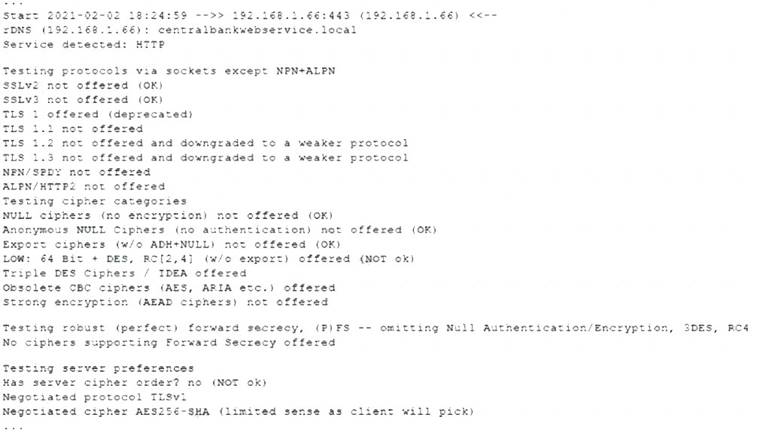A penetration tester utilized Nmap to scan host 64.13.134.52 and received the following results:
Based on the output, which of the following services are MOST likely to be exploited? (Choose two.)
Correct Answer:
BD
A penetration tester created the following script to use in an engagement:
However, the tester is receiving the following error when trying to run the script:
Which of the following is the reason for the error?
Correct Answer:
C
The sys module is a built-in module in Python that provides access to system-specific parameters and functions, such as command-line arguments, standard input/output, and exit status. The sys module must be imported before it can be used in a script, otherwise an error will occur. The script uses the sys.argv variable, which is a list that contains the command-line arguments passed to the script. However, the script does not import the sys module at the beginning, which causes the error “NameError: name ‘sys’ is not defined”. To fix this error, the script should include the statement “import sys” at the top. The other options are not valid reasons for the error.
A penetration tester conducted an assessment on a web server. The logs from this session show the following:
http://www.thecompanydomain.com/servicestatus.php?serviceID=892&serviceID=892 ‘ ; DROP TABLE SERVICES; -
Which of the following attacks is being attempted?
Correct Answer:
C
The following output is from reconnaissance on a public-facing banking website:
Based on these results, which of the following attacks is MOST likely to succeed?
Correct Answer:
D
Based on these results, the most likely attack to succeed is a Heartbleed attack. The Heartbleed attack is a vulnerability in the OpenSSL implementation of the TLS/SSL protocol that allows an attacker to read the
memory of the server and potentially steal sensitive information, such as private keys, passwords, or session tokens. The results show that the website is using OpenSSL 1.0.1f, which is vulnerable to the Heartbleed attack1.
The provision that defines the level of responsibility between the penetration tester and the client for preventing unauthorized disclosure is found in the:
Correct Answer:
A
The provision that defines the level of responsibility between the penetration tester and the client for preventing unauthorized disclosure is found in the NDA, which stands for Non-Disclosure Agreement. The NDA is a legal agreement between two or more parties that outlines confidential material or knowledge that the parties wish to share with one another, but with restrictions on access, use or disclosure of that information. The NDA is commonly used in the context of penetration testing to protect the client's sensitive information that the tester may have access to during the engagement.
The NDA defines the terms of confidentiality and non-disclosure of information related to the engagement, including the responsibilities and obligations of both the tester and the client to ensure that any information exchanged or obtained during the engagement is kept confidential and not disclosed to unauthorized parties. This is particularly important in penetration testing, as the tester is granted access to the client's network and systems, and may uncover vulnerabilities or sensitive information that should not be disclosed to unauthorized parties.
In summary, the NDA plays a crucial role in defining the level of responsibility between the penetration tester and the client for preventing unauthorized disclosure of confidential information, and is an important legal instrument for protecting the client's sensitive information during a penetration testing engagement.